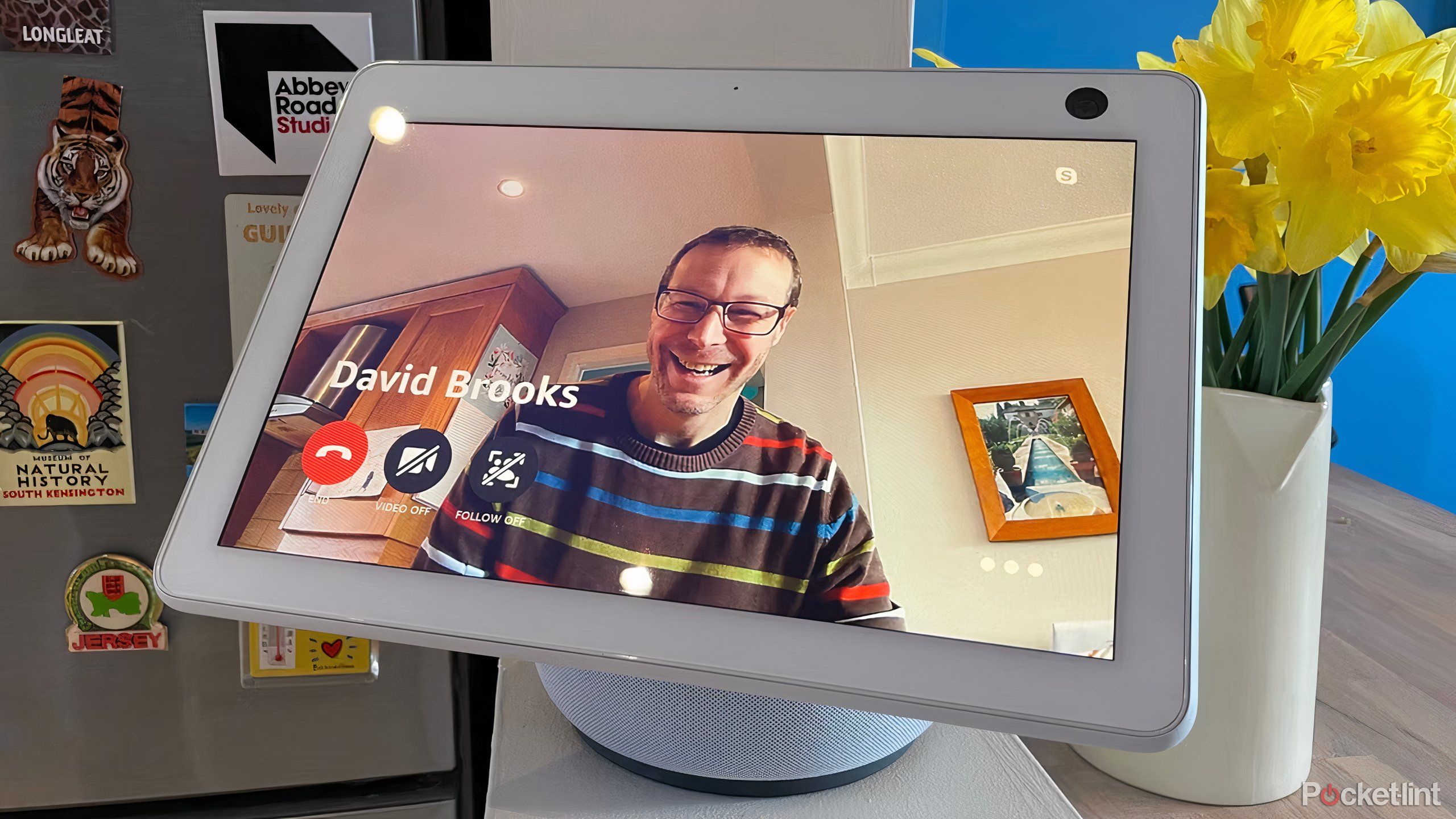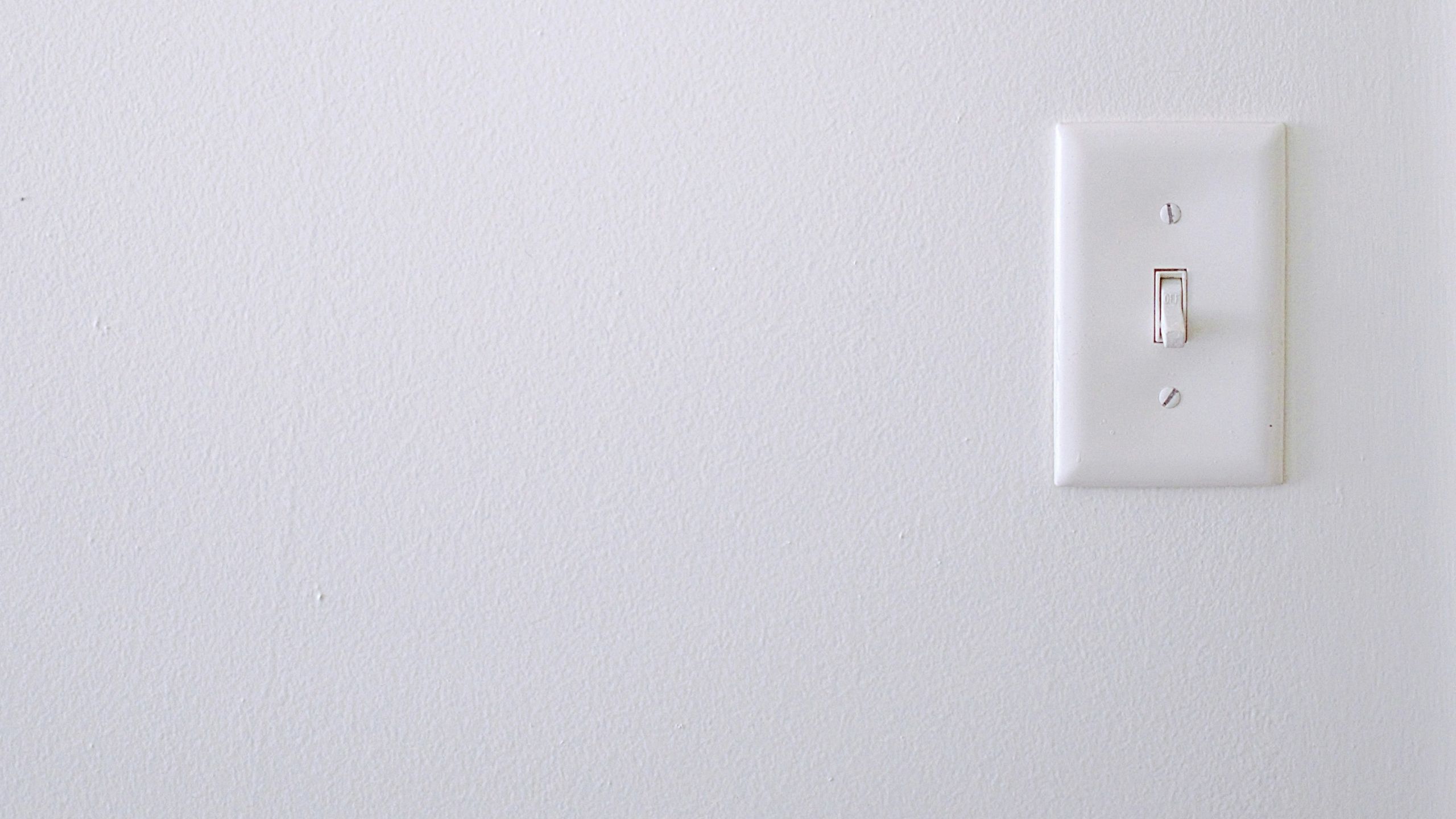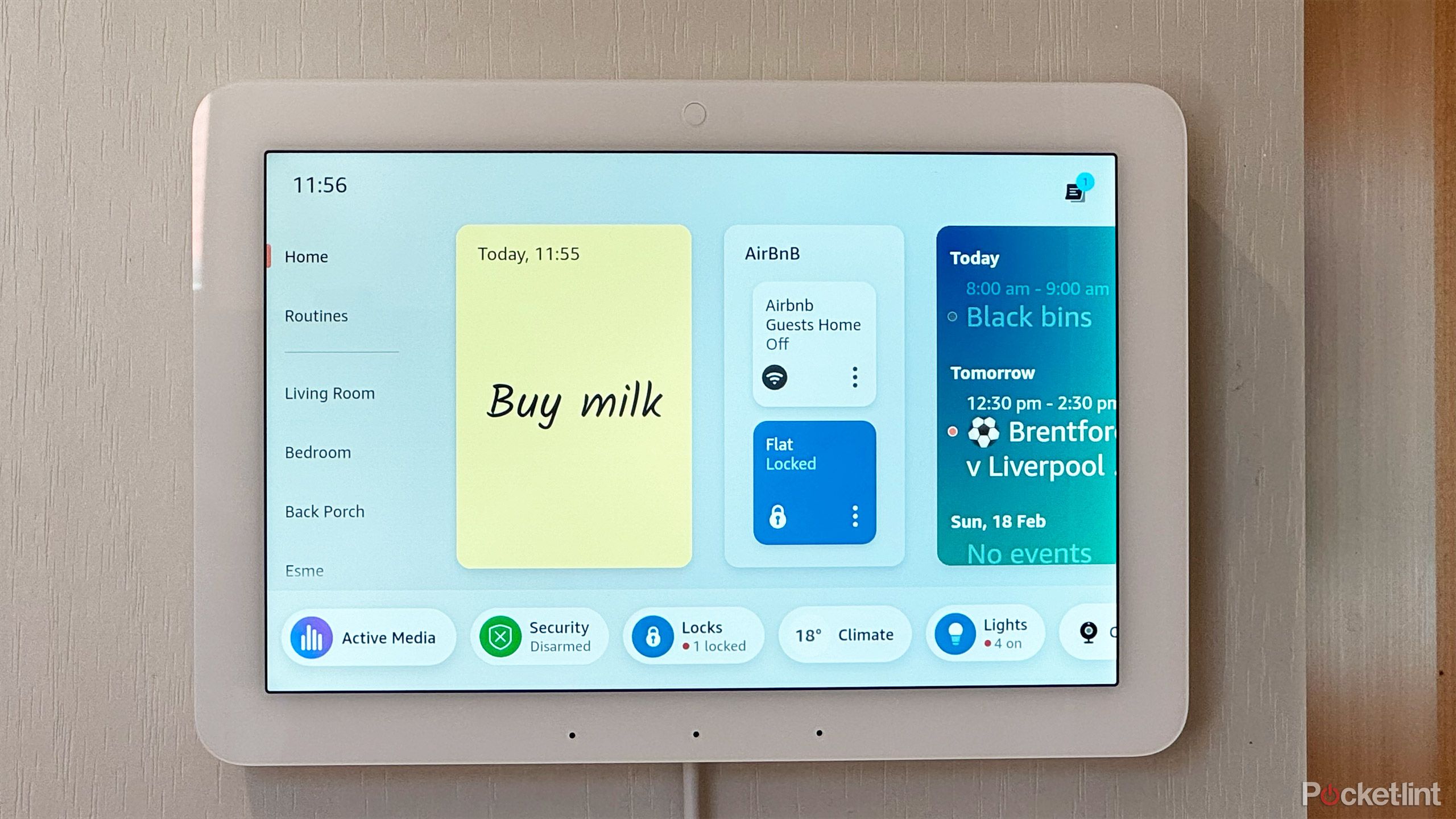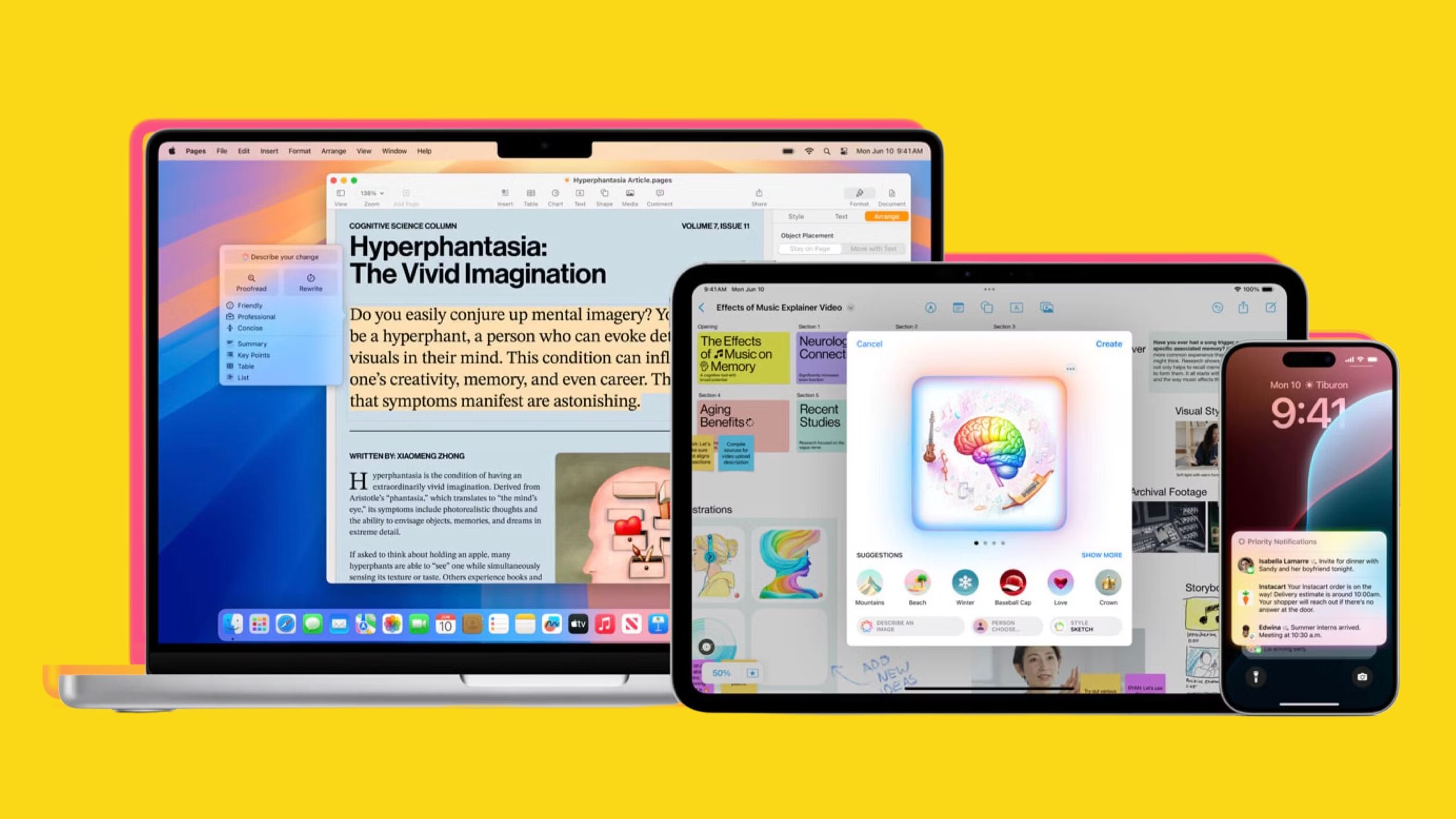Key Takeaways
- Apple’s plan involves creating affordable smart displays and more expensive tabletop devices
- The focus is on smart home control, not automation, which may limit convenience
- AI-powered voice assistants, like Apple Intelligence, could revolutionize genuine home automation
According to Bloomberg’s Mark Gurman, Apple has a plan to try and catch up with Amazon and Google in the smart home market. The plan involves creating two new smart home products; a smart display that’s affordable enough for multiple products to be placed around the home, and a more expensive tabletop device with a robotic arm that will keep the iPad-style screen constantly pointed in the right direction.
Apple already has skin in the game, but the closed ecosystem that Apple loves hasn’t always been ideal for combining with smart home tech. HomeKit products can be controlled by Apple devices with ease, but many popular smart home devices don’t support HomeKit, with Alexa and Google Assistant support being more common.
Sadly, Apple’s plans to conquer the smart home world seem misplaced to me. The ultimate aim appears to try to put an Apple screen in every room of the home, but this isn’t necessarily the right move. That’s because Apple seems to be going all out on smart home control instead of smart home automation. Here’s why that’s the opposite of what I want.
Related
Is Apple Intelligence really the AI we’ve been waiting for, or just more noise?
Apple Intelligence brings AI features to iPhones, iPads, and Macs — but how well do these new features compare to competitors?
Apple’s plan is for screens everywhere
A screen in every room is great for Apple, but not for us
The title of Mark Gurman’s latest newsletter is “Apple Has a New Smart Home Strategy: Screens Everywhere”. According to Gurman, Apple’s strategy is to put screens throughout the house, so that you can access one wherever in the home you may be.
There are two products that are apparently in development. The first is a smart display that would have a screen similar to an iPad and would be affordable enough that you could place multiple smart displays around your home. This sounds a lot like the smart displays that have been available from Amazon and Google for years.
The second rumored device is a little different, however. It’s a tabletop smart display device with a robotic limb which can move the screen around so that it’s always facing you, no matter where in the room you might be.
The second rumored device is a little different, however. It’s a tabletop smart display device with a robotic limb which can move the screen around so that it’s always facing you, no matter where in the room you might be. Amazon’s Echo Show 10 is already able to rotate to follow you around the room, and this seems to be taking this one step further by allowing the screen to be even more maneuverable thanks to the robotic arm.
This iPad-on-a-robotic arm won’t come cheap, either, with Gurman estimating that the price may be around the $1,000 mark. This seems like a high price for an essentially new product that many consumers won’t be completely convinced that they need.
This isn’t smart home automation, it’s smart home control
Apple is essentially offering an incredibly expensive switch
Isabella Fischer on Unsplash
My biggest problem with Apple’s strategy is that it’s the complete opposite of what I want from my smart home. I’m a big fan of smart home automation, and with true smart home automation, you don’t need a screen in every room. In fact, you don’t necessarily need any screens at all.
Smart home automation is exactly that: automatic. What Apple seems to be working on is smart home control, and there’s a big difference. With smart home automation, you walk into a room, and the lights turn on by themselves. With smart home control, you walk into a room, stroll over to your iPad stuck on a robotic arm, tap a button on the screen, and then the lights turn on. Apple’s new tabletop device effectively becomes a $1,000 light switch.
With smart home control, you walk into a room, stroll over to your iPad stuck on a robotic arm, tap a button on the screen, and then the lights turn on. Apple’s new tabletop device effectively becomes a $1,000 light switch.
This is a simplistic example; Apple’s smart home control will be able to control all of your smart home devices, not just your lights, but it’s still essentially a big collection of switches. Each Apple smart display that you place in rooms around your home is just another collection of the same switches that you can use in a different location. There’s nothing hugely smart about that at all.
True home automation works almost like magic. I use Home Assistant to create custom automations for my home; one of my favorites is a simple automation that is triggered when I walk into my kitchen for the first time on the morning of trash day. My smart speaker reminds me that it’s trash day and tells me whether I need to put my trash out or my recycling. I do nothing whatsoever to make this automation happen other than walk into my kitchen like I do every morning, and I haven’t forgotten to put out the trash since the day I set it up.
This is true home automation; it makes your life easier and doesn’t require any effort on your part to make it happen, once it’s been set up. What Apple seems to be working on is about as far from this as you can get.
Amazon’s example indicates Apple’s plan may not be the right one
The Amazon Echo Hub hasn’t set the world alight
If Apple needed any clues that the strategy might not necessarily be the right one, they only need to take a look at another huge company beginning with A. Amazon is one of the major players when it comes to the smart home, with Echo devices able to control a huge range of smart home devices. For many people, using an Amazon Echo is their only real experience of what a smart home is.
Earlier this year, Amazon released a new product that was focused specifically on the smart home. The Amazon Echo Hub is a smart display that is intended to be the center of your smart home, allowing you to control all of your smart home devices from one location. This is essentially what it sounds like Apple is working on.
I have an Echo Hub in my home, and I honestly can’t remember the last time that I used it to control a smart home device.
However, the Echo Hub has hardly been a roaring success. I have an Echo Hub in my home, and I honestly can’t remember the last time that I used it to control a smart home device. The reason for this is that when I want to control a device, I’m almost never standing within reach of the Echo Hub. Getting up and tapping an icon on the screen to turn on a light is no more convenient than getting up and turning on the switch the old-fashioned way.
This is the same problem that Apple’s new smart home devices are likely to have. The cheap models that you place in different rooms will always be in one location in the room, and unless you’re right next to it, operating it will be inconvenient.
The robotic tabletop device may be a little more useful if it’s possible to summon it towards you when you’re lounging on the sofa, but even then, it’s likely to be out of reach for the other people in the room. If a smart home controller is not immediately within reach to interact with, it’s just not going to get used.
Apple Intelligence has the potential to make things better
AI is more likely to be the real game changer
Apple/Pocket-lint
Another thing that Mark Gurman mentioned in his newsletter was that Apple is planning to use Apple Intelligence to offer “home automation on steroids” and this is something that I am genuinely excited about. In fact, I was excited about it all the way back in September 2023, when Amazon showcased what might be possible with a version of Alexa that was powered by artificial intelligence.
During the demonstration, it was explained that in the future, you would be able to set up complex home automations just by asking Alexa to create them. For example, you could say “Alexa, every weekday morning at 7am, play my Wake Me Up Before You Go Go playlist, open the blinds, turn on the coffee machine in the kitchen, and unlock the front door.” Alexa would then be able to create the routine for you, without you having to mess around in the Alexa app, painstakingly adding in all the parts of the routine yourself.
If Apple is able to harness the power of Apple Intelligence to make genuine smart home automation as simple as telling Siri what you want to happen, then I’m all in.
This is much closer to the dream of home automation; actions that happen by themselves without you needing to do anything to initiate them. Being able to create these types of home automations using an AI-powered voice assistant would make the bar for entry so much lower; even a child could do it.
Sadly, however, it’s more than a year later, and we’re still yet to get the AI-powered Alexa we were promised. What’s worse is that when we do, we’ll probably have to pay for it. If Apple is able to harness the power of Apple Intelligence to make genuine smart home automation as simple as telling Siri what you want to happen, then I’m all in.
It will be a long time before anything can replace my Home Assistant setup
The smart home utopia still feels a long way off
It’s very rare these days that I read something about smart home tech that gets me genuinely excited. Despite improvements, the whole landscape is still a mess, with competing protocols and smart home devices that don’t play nicely with others.
Software such as Home Assistant and OpenHAB has enabled me to create complex home automations that work with almost every smart home gadget that I own, regardless of protocol or manufacturer.
Through all of this, however, software such as Home Assistant and OpenHAB has enabled me to create complex home automations that work with almost every smart home gadget that I own, regardless of protocol or manufacturer. The trouble is that these platforms come with a steep learning curve. You can create simple automations without too much trouble, but if you want to create more complex routines, you need to be able to write code or create visual flow-based automations using tools such as Node Red. This means that Home Assistant or similar solutions aren’t accessible to the vast majority of people.
A company like Apple has the resources and the experience to develop a user-friendly method of creating genuine home automation that would be accessible to almost anyone. Sadly, based on the latest reports, Apple is focusing on creating yet more home control. While this may help Apple sell more products, it’s not going to help the user get any closer to a truly smart home.
Trending Products

Cooler Master MasterBox Q300L Micro-ATX Tower with Magnetic Design Dust Filter, Transparent Acrylic Side Panel…

ASUS TUF Gaming GT301 ZAKU II Edition ATX mid-Tower Compact case with Tempered Glass Side Panel, Honeycomb Front Panel…

ASUS TUF Gaming GT501 Mid-Tower Computer Case for up to EATX Motherboards with USB 3.0 Front Panel Cases GT501/GRY/WITH…

be quiet! Pure Base 500DX Black, Mid Tower ATX case, ARGB, 3 pre-installed Pure Wings 2, BGW37, tempered glass window

ASUS ROG Strix Helios GX601 White Edition RGB Mid-Tower Computer Case for ATX/EATX Motherboards with tempered glass…















